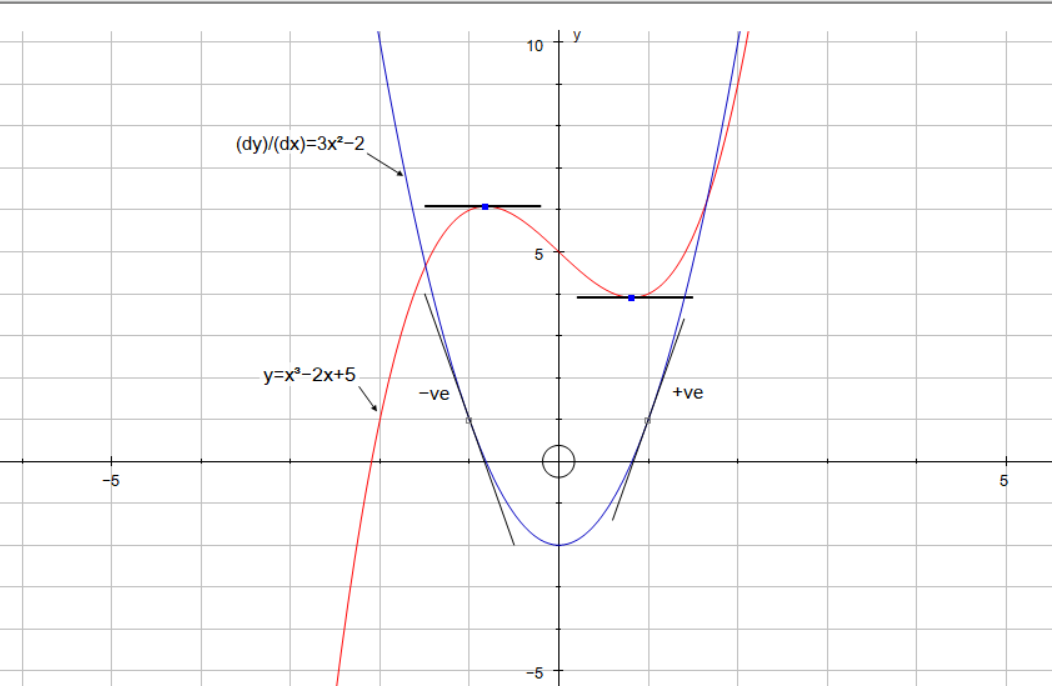How do you find local maximum value of f using the first and second derivative tests: #f(x)=x^3-2x+5# on the interval (-2,2)?
1 Answer
Nov 27, 2017
See below.
Explanation:
First differentiate
equating this to zero and solving fot
We now use the second derivative test. If:
Second derivative:
These are both in the interval
Graph of function and first derivative:


